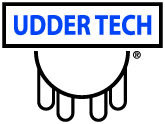During the summer, I frequently get asked about mowing pastures. Often, farmers are seeking a yes or no answer … and hopefully validation of their current practice. Unfortunately, the answer is somewhat dependent on previous pasture management and the chosen grazing system.
If pastures have heavy weed pressure, encroaching woody species and a predominantly continuous grazing system … then clipping pastures is most likely needed. It is mostly needed for weed control. However, it will also reset forages, promoting a more even grazing pattern in summer and early fall. Resetting forage prior to stockpiling will help increase the quality of the forage available, especially in fescue stockpile.
If pastures are experiencing low weed pressure and rotational grazing or adaptive grazing is being utilized, then clipping/mowing is likely not worth it. Multispecies grazing also helps control weeds and promote uniform grazing. Improving your management with rotation and rest, stocking rates that match forage growth curves and multiple species for uniform grazing will be more viable than clipping.
Of course, there are always a few special considerations. Does the landowner want the pasture mowed? If so, mowing may be part of keeping a landlord happy and part of maintaining access to the land. Is ergot an issue? Ergot is a fungus that grows on seedheads and can cause animal health issues if consumed in large enough amounts. Mowing off seedheads is a good remedy to control ergot poisoning in cattle. Are you in a drought? If so, keeping as much ground cover as possible is needed. Do not mow pastures in a drought.
Pros of mowing pasture
- Weed control/control of less-desirable species/lower need for herbicide weed control
- Uniform regrowth of vegetative plants results in higher-quality pasture and more intake
- Allow sunlight to reach down into preferred plants in the stand
- Eliminates seedheads and reduces eye irritation (helps prevent pinkeye, fescue foot, ergot)
- "Looks good" (may be a factor if you are renting pasture)
Cons of mowing pasture
- Fuel, equipment, labor costs
- Exposes soil to sunlight, raising soil temperature (bad for soil biology and cool-season plants)
- Reduces natural reseeding of plants
- Clipping pastures in the boot stage of the plant can deplete root reserves
- Orchardgrass and warm-season grasses do not tolerate low mowing heights
- Mowing at the same time each year may reduce plant diversity
The cost of clipping pastures is variable. In a recent publication by Illinois Farm Business Farm Management, mowing pastures with a rotary-type mower results in a cost of $22 per acre. That cost could be slightly higher due to elevated fuel costs. Iowa published a cost of $28.25 per acre for mowing pasture in their 2024 Farm Custom Rate Survey.








